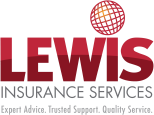Setting your business up for EOFY
With the end of another financial year fast approaching, it’s time to prepare for your EOFY obligations. This most probably means spending long hours at your desk in addition to your usual workload, simply to get all the paperwork completed. The problem is that it’s not just your tax that needs to be finalised, there’s a whole range of other EOFY responsibilities and obligations that need to be addressed by small business owners.So if you are not looking forward to the end of the EOFY rush, here is a quick checklist that will help make the whole process run much more smoothly.
Prepare your paperwork for the ATO
For most small businesses, the EOFY means that you need to collate all the necessary paperwork for your accountant or the ATO. This includes your updated information on PAYG withholding, fringe benefits tax, GST and superannuation payments. Also remember that you can claim back any GST paid on bad debts, so you will need this paperwork as well.
You also need to ensure your records for existing depreciating assets, as well as capital gains or losses throughout the year are up to date. Receipts are required to be on file for any newly acquired assets, as well as improvements or repairs to these assets, all of which are required for any depreciation claims or capital gains tax payments.
Perform an EOFY stocktake
The ATO requires businesses to perform an EOFY stocktake if their annual turnover is $10m or more. However, if the difference between the value of your stock at the beginning and end of the financial year is more than $5,000 and your annual turnover is less than $10m, you also need to do a stocktake. This includes a list of all stocked items and their value, the name of the person who performed the stocktake, as well as the date and how the items were valued.
Collate all your deductions
The EOFY is when you can claim all your business expenses as tax deductions. These include business related purchases, such as machinery, computer equipment, tools, websites and hosting, vehicle expenses, fuel and travel. So it’s the ideal time to quickly review all your equipment, machinery and vehicles to decide whether to replace, dispose or sell it before the EOFY deadline. Also, remember that you can leverage the instant write-off scheme which has risen to $150,000 for the current 2020 to 2021 financial year. Your accountant can give you advice on deductions.
Review the government COVID-19 relief packages
If you have received any relief from the government during the COVID-19 crisis, you will need to keep all the required documentation. We have already mentioned the instant write-off scheme, but there’s also the JobKeeper and SME Recovery Loan Scheme, as well as Apprenticeship Wage subsidies and many others. You will need to check the government website or speak with your accountant to ensure that you have included all relevant concessions and have all the paperwork ready for the EOFY.
Once your EOFY obligations have been settled, it’s a good time to review your business plan for the next 12 months. It’s been a hectic 12-18 months and COVID-19 has impacted people and businesses in ways that weren’t planned for. It’s time to consolidate your business (as well as your personal) planning based on your industry and own business.
We recommend that you also review all your business and personal insurances, to make sure that you have the cover you need, and ensure your key risks are addressed. These include your business covers, loss of income, home and contents, car and plant & equipment. Speak with your insurance adviser today and find your local adviser, they will be able to provide the best advice and recommendations for you and your business.
Contact Lewis Insurance Services on 07 3217 9015 or send us an email by clicking here.
This article was published by our AFSL Licensee, Insurance Advisernet Australia P/L, www.insuranceadviser.net
Disclaimer:
This information and any accompanying material does not consider your personal circumstances as it is of a general nature only. You should not act on the information provided without first obtaining professional financial advice specific to your circumstances and considering the Product Disclosure Statement.

